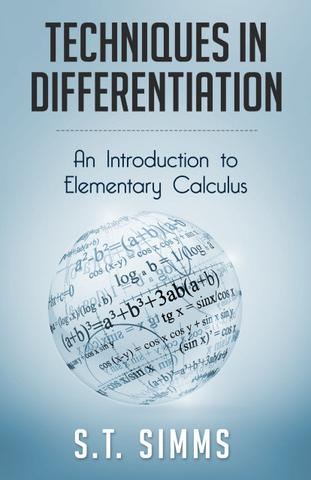- Mathematics
- >
- Techniques in Differentiation - An Introduction to Elementary Calculus
Techniques in Differentiation - An Introduction to Elementary Calculus
SKU:
MTTD
A$20.00
A$20.00
Unavailable
per item
Textbook introducing elementary calculus. This volume focuses purely on differentiation.
Paperback: 140 pages
Language: English
ISBN-10: 0987528912
ISBN-13: 978-0987528919
Product Dimensions: 14 x 0.76 x 21.5 cm
Shipping Weight: 0.22 kilograms
The discovery of calculus in the seventeenth century by Isaac Newton and Gottfried Leibniz, helped usher in a revolution in mathematics and science that had a profound and far-reaching effect on the world. Calculus provided a powerful tool that enabled the fledgling science of physics to break new ground in our understanding of the workings of the natural universe. Indeed, calculus is virtually synonymous with physics as it is the mathematics of infinitesimal change. As the world about us appears to be a continuity punctuated by discrete things, then calculus is vital in understanding the behavior of a quantitative change relative to another, from one instant to the next. The intellectual endeavor of mathematics can be thought of as a tree, with calculus one of its boughs. This bough consisting of two major branches, one entwined about the other—differentiation and integration. This book focuses on the discovery, methods and applications of the mathematics of differentiation. Differential calculus, as opposed to integral calculus, considers variable quantitative relationships to one another in the form of tangents. Techniques in Differentiation is based on material written for high school calculus students. However, the book is suitable for any elementary calculus student at either high school or university level. It aims to give calculus students a deeper understanding of the subject. This is achieved by, in part, providing more historical background and development than is offered by most calculus textbooks. A common failing of many technical textbooks is to skim over mathematical workings that get to some result. Mathematical and scientific textbooks typically assume the student has the required mathematical skill to provide the missing details for themselves. This is an ongoing major complaint of students and can make the study of a mathematics textbook particularly frustrating. The author of Techniques in Differentiation in contrast, provides detailed line-by-line working in proofs and examples. Another complaint of mathematics students is textbooks that provide too few exercises, or overly simple questions with which to practice. The author provides a large number of exercise questions, ranging in level of difficulty from easy to challenging. In addition, Techniques in Differentiation includes the answers to all the questions in the exercises at the end of each chapter. It is particularly irksome when a textbook does not provide answers to exercises—students find it frustrating when they are unable to see if they have adequately mastered the concepts and techniques outlined in a mathematics book. The dedicated student will find in calculus a powerful analytical tool with applications in the physical sciences, engineering and technology. And like all areas of mathematics, it can also be appreciated for its own inherent beauty. Techniques in Differentiation will provide mathematics students with the technical skills with which to explore and appreciate calculus and its applications.






